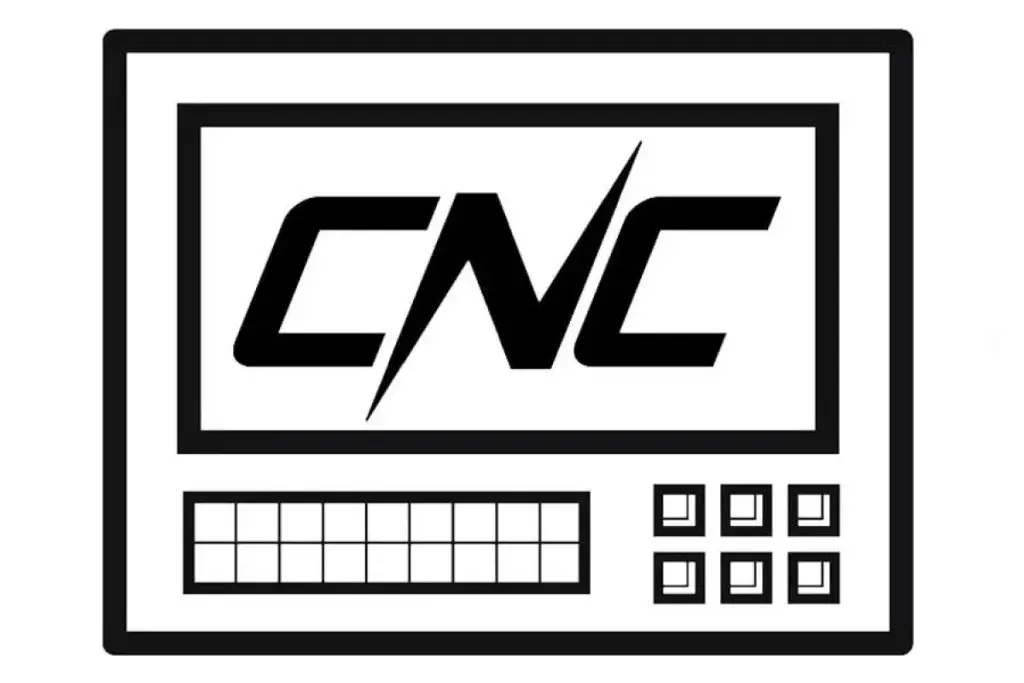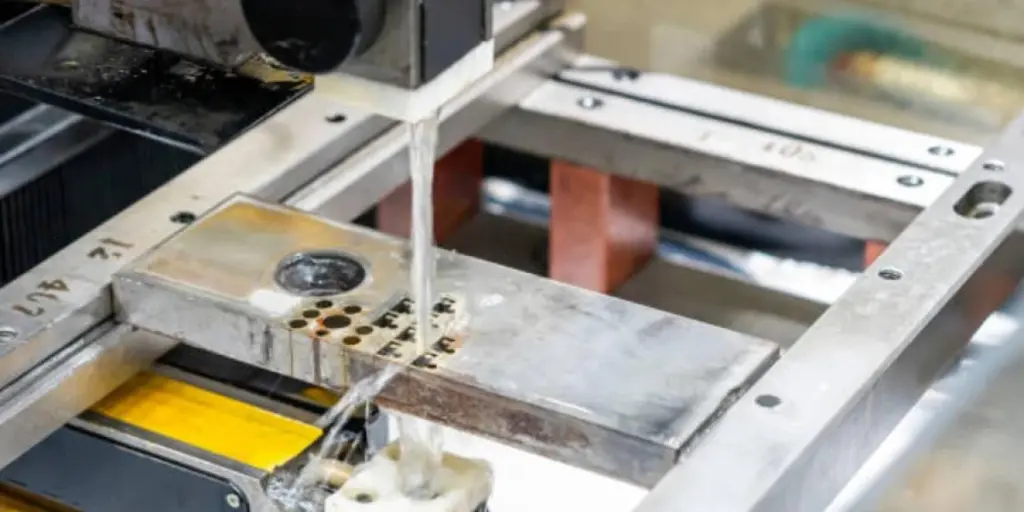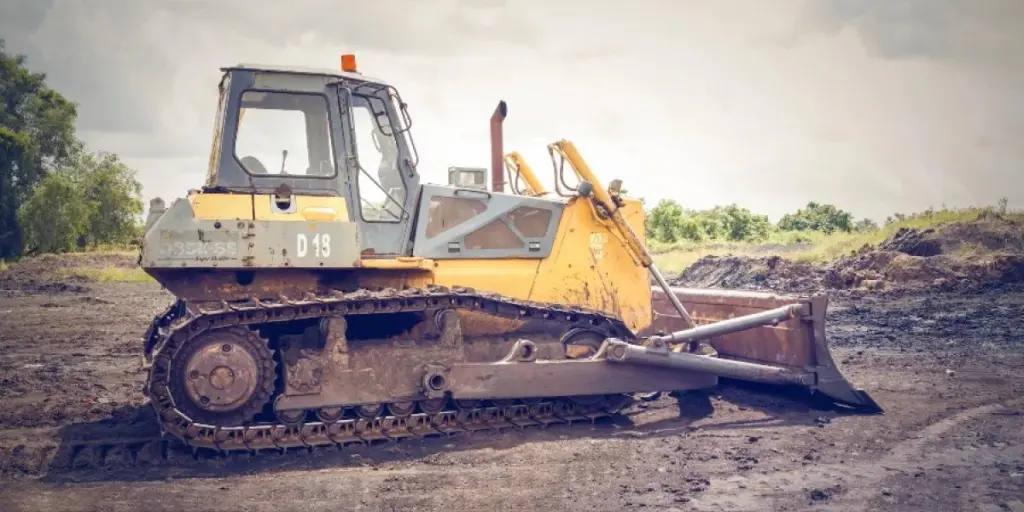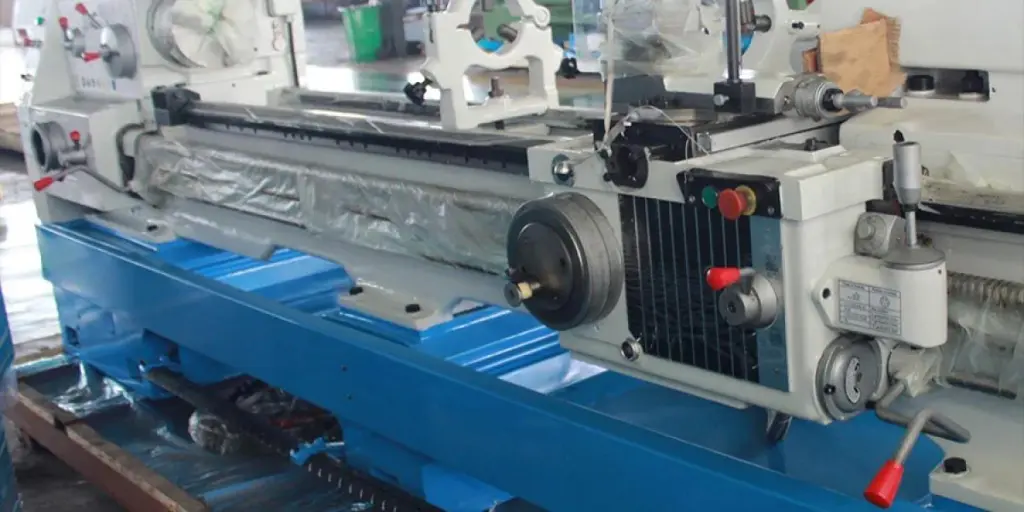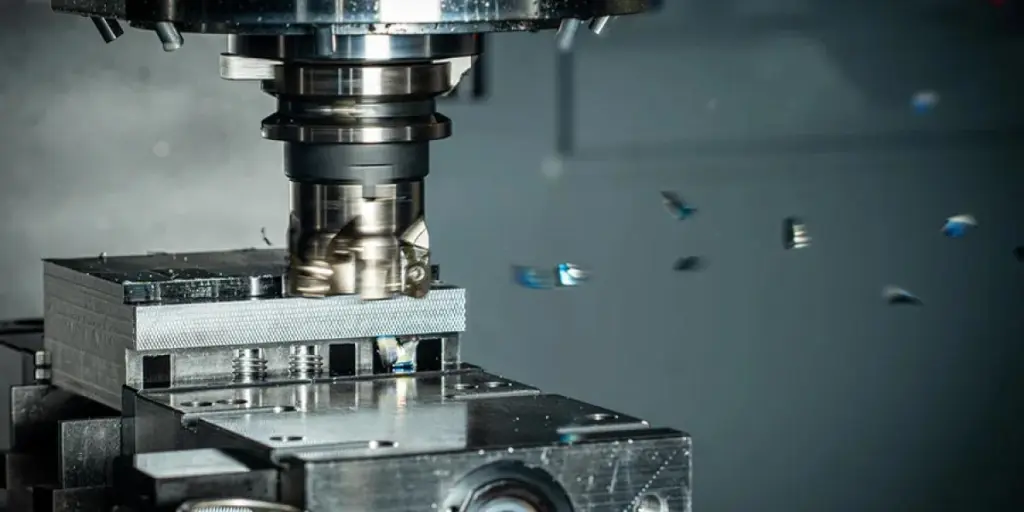Computer numerical control (CNC) is the automated control of machining tools using software embedded in a microcomputer attached to the machine tool. G-code is the most widely used programming language in CNC.
Table of Contents
Definitions and concepts
Components
Features
Applications
Trends
Glossary
Definitions and concepts
NC (Numerical Control)
NC is a form of programmable technology that uses digital signals to automatically control objects (such as the position and motion of machine tools).
NC Technology
NC technology refers to the automated control technology that uses numbers, letters, and symbols to program certain working processes.
NC System
NC system refers to the organic integrated system of software and hardware modules that realize the functions of NC technology. It is the carrier of NC technology.
CNC System (Computer Numerical Control System)
CNC (Computer Numerical Control) system refers to the numerical control system with a computer at its core.
CNC Machine
A CNC machine refers to a machine that uses Computer Numerical Control technology to control the machining process, such as a lathe, router, grinder, etc., or a machine tool equipped with a CNC system.
NC
Numerical Control (NC) enables an operator to communicate with machine tools through numbers and symbols.
CNC
CNC stands for Computer Numerical Control, which has brought tremendous changes to the manufacturing industry. New machine tools with CNC enable industry to consistently produce parts with accuracies that could only be dreamed of previously. Parts can be identically reproduced with the same degree of accuracy any number of times if the program has been properly written and the computer is correctly programmed. The operating commands which control the machine tool are executed automatically with amazing speed, accuracy, efficiency, and repeatability.
CNC machining is a computerized manufacturing process. The machine is connected to a computer, which tells it where to move and at what speed. Firstly, the operator needs to use a software program to draw the shapes and create the tool path that the machine will follow.
The ever-increasing use in industry has created a need for personnel trained in preparing the programs which guide the machine tools to produce parts of the required shape and accuracy. The authors have prepared this guide with this in mind, to take the mystery out of CNC by using a logical sequence and simple language that everyone can understand. How to prepare a program is explained step-by-step, with practical examples to guide the user.
Components
CNC technology consists of three main elements, namely the machine bed frame, system, and peripheral technology.
The machine frame kit includes the bed, column, guide rail, working table, and other supporting parts such as a tool holder and tool magazine.
The numerical control system is composed of input/output equipment, a computer numerical control device, Programmable Logic Control (PLC), a spindle servo drive device, a feed servo drive device, and a measuring device. Among them, the machine control unit (MCU) is the core of the numerical control system.
The peripheral technology includes tool (tool system), programming, and management technology.
Features
High accuracy
CNC machines are highly-integrated mechatronic products, composed of precision machinery and automatic control systems. They have high positioning and repeat positioning accuracy. The transmission system and the structure are extremely rigid and stable to reduce errors. Consequently, CNC machines have higher machining accuracy, especially in the consistency of parts manufactured in the same batch. As a result, the product quality is stable and the pass rate is high, which is a significant improvement on ordinary machine tools.
High efficiency
CNC machines can cut large amounts of materials consistently which effectively saves processing time. They also possess automatic speed change, tool change, and several other automated operational functions, which greatly shorten the auxiliary time. Once a stable processing process is formed there is no need to perform inter-process inspection or measurement. Therefore, CNC machining productivity is 3-4 times that of ordinary machine tools, or sometimes even more.
High adaptability
CNC machines perform automatic processing according to the processed parts program. When the machining object is changed, there is no need to use special process equipment such as masters and templates, as long as the program has been changed. This helps to shorten the production preparation cycle and promote product replacement.
High machinability
Some mechanical parts with complex curves and curved surfaces are difficult or even impossible to complete with conventional manual techniques, but CNC machines can easily complete such tasks using multi-coordinate axes linkage.
High economic value
CNC machining centers are generally used for bulk production using a multi-purpose machine. The majority of parts can be processed using a one clamp system, therefore replacing several ordinary machine tools. This reduces clamping errors and saves transportation, measurement, and clamping between processes, while also reducing the number of different machine tools and the machine tool area, all of which bring economic benefits.
Applications
From the perspective of CNC technology and equipment applications globally, its main application areas are as follows:
Manufacturing industry
The machine manufacturing industry was the first to employ CNC technology and is responsible for providing advanced equipment for various national industries. It is mainly applied in the development and manufacturing of five-axis vertical machining centers for modern military equipment, other five-axis machining centers, large-scale five-axis gantry milling, and CNC machines for flexible engine, gearbox, and crankshaft manufacturing lines in the automotive industry. CNC technology is also employed in high-speed machining centers, welding, assembly, painting robots, plate laser welding machines, laser cutting machines, high-speed five-coordinate machining centers that machine propellers, engines, generators, and turbine blade parts in the aviation, marine, and power generation industries, heavy-duty turning, and milling complex machining centers, etc.
Information industry
In the information industry, from computers to networks, mobile communications, telemetry, remote controls, and other equipment, it is necessary to adopt manufacturing equipment based on super-precision technology and nanotechnology. These include wire bonding machines for chip manufacturing and wafer lithography machines, etc. The control of all of these machines is done via CNC technology.
Medical equipment industry
In the medical supplies industry, several modern medical diagnosis and treatment apparatus now use NC technology, such as CT diagnostic instruments, whole body treatment machines, and minimally invasive visually-guided surgical robots. It’s also employed in orthodontics and dental restoration.
Military equipment
A significant amount of modern military equipment uses servo motion control technology, including automatic artillery aiming, radar tracking, and automatic missile tracking.
Other industries
In the lighting industry, printing, textile, packaging, and woodworking machinery use multi-axis servo control. The building materials industry uses CNC waterjet cutting machines for stone processing and CNC glass engraving machines for glass processing. Simmons mattresses are manufactured using CNC sewing machines, and CNC embroidery machines are used in clothing processing. In the art industry, an increasing number of crafts and artworks are being produced using high-performance 5-axis CNC machines.
The application of NC technology not only brings revolutionary changes to traditional manufacturing industries, making them symbols of industrialization but also with its ever-expanding application, it has greatly impacted several important national industries. This affects both the economy and people’s livelihoods (IT, automobiles, etc.). It plays an increasingly important role in other industries since the digitization of equipment required by these industries has become a major modern development trend.
Trends
Currently, CNC machines show the following development trends:
High speed and high precision
High speed and precision are the eternal aspirations of machine tool developers. With recent rapid advances in science and technology, electromechanical product replacement parts are needed quickly in large numbers. The precision and surface quality of parts processing are also becoming higher and higher. To meet the needs of this complex and changeable market, current machine tools are progressing in the direction of high-speed cutting, dry cutting, and quasi-dry cutting, and machining accuracy is constantly improving. In addition, the use of electric spindles and linear motors, ceramic ball bearings, high-precision large-lead hollow internal cooling, ball nut strong cooling, low-temperature high-speed ball screw pairs, linear guide pairs with ball cages, and other machine tool components, have been introduced very successfully The launch of the machine tool has also facilitated the development of high-speed precision machine tools.
CNC machines use an electric spindle, which removes the need for traditional manual components such as belts, pulleys, and gears, and therefore greatly reduces the rotational inertia of the main drive and improves the dynamic response speed and working accuracy of the spindle. Thus, traditional belt and pulley problems when the spindle runs at high speed, such as vibration and noise issues, are irradicated. Electric spindles can reach speeds of more than 10000r/min. The linear motor has a high drive speed, good acceleration and deceleration characteristics, and excellent response and following accuracy.
The use of a linear motor servo drives eliminates the ball screw intermediate transmission link and the transmission gap (including backlash), the motion inertia is small, the system rigidity is good, and it can be precisely positioned at high speed, all of which greatly improve the servo accuracy. Due to its zero clearance in all directions and very low rolling friction, the linear rolling guide pair suffers only negligible heat generation. It also possesses exceptionally good thermal stability which improves the positioning accuracy and repeatability of the whole process. Through the application of the linear motor and linear rolling guide pair, the rapid moving speed of the machine can be increased from the original 10-20m/min to 60-80m/min, or sometimes even as high as 120m/min.
High reliability
Reliability is a key quality indicator of CNC machines. Whether the machine can maintain its high performance, precision, efficiency, and other benefits, depends on its reliability.
CNC Machine designs with CAD and modular structural design
With the popularization and development of computer applications and software technology, CAD technology has also become widely developed. CAD replaces tedious manual drawing work and most importantly, it can perform design scheme selection and static and dynamic characteristic analysis, calculation, and prediction. It can also optimize the design of entire large-scale machines and conduct dynamic simulations of each working part. Based on modularity, a 3D geometric model and the actual color of the product can be seen throughout the design stage. The use of CAD can also greatly improve work efficiency and one-time design success rates, thereby shortening the trial production cycle, reducing design costs, and improving market competitiveness. Furthermore, the modular design of machine tool components reduces repetitive labor, and can also respond quickly to the market and shorten product development and design cycles.
Functional compounding
The purpose of functional compounding is to further improve the machine tool production efficiency and minimize non-machining auxiliary time. Through the compounding of functions, the usage range of the machine tool can be expanded, the efficiency can be improved, and a multi-purpose, multi-function machine can be realized. CNC machines can perform turning, grinding, and milling functions. The Baoji machine tool factory has successfully developed the CX25Y CNC turning and milling compound center, which simultaneously has X- and Z-axes, and C- and Y-axes. Plane milling and machining of offset holes and grooves can be achieved through the C- and Y-axes.
The machine is also equipped with a powerful tool rest and a sub-spindle. The sub-spindle adopts a built-in electric spindle structure, and synchronization of the speed of the main and sub-spindles can be directly realized through the numerical control system. In addition, the machine tool workpiece can complete all processing in one clamping, which greatly improves efficiency.
Intelligent, networked, flexible, and integrated
CNC equipment has a certain intelligence. This intelligence includes all aspects of the numerical control system. The process parameters are automatically generated to pursue intelligence in machining efficiency and quality, such as the adaptive control of the machining process. The driving performance and connections such as feedforward control, the self-adaptive operation of motor parameters, automatic load identification, automatic model selection, and self-tuning, can also be improved. Simplified programming and operating intelligence, such as intelligent automatic programming, and intelligent human-machine interface can be achieved. Intelligent diagnosis, monitoring, and other aspects facilitate the diagnosis and maintenance of the system.
Networked numerical control equipment is currently a hot spot in machine tool development. The networking of CNC equipment can meet the needs of production lines, manufacturing systems, and manufacturing enterprises for information integration, and is also the basis for developing new manufacturing models, such as agile manufacturing, virtual enterprises, and global manufacturing.
Current CNC machines with flexible automation systems under development include: point (stand-alone, machining center, and composite machining machines), line (FMC, FMS, FTL, FML) surface (independent manufacturing island in workshop, FA), and body (CIMS, distributed network integrated manufacturing system).
The other main focus is on application and economy. Flexible automation technology is the main means for the manufacturing industry to adapt to dynamic market demands and rapidly update its products. Its focus is to improve the reliability and practicality of the system, with easy networking and integration as the main goal, in addition to strengthening the development and improvement of unit technology. CNC stand-alone machines are developing in the direction of high precision, high speed, and high flexibility. CNC machines and their constituent flexible manufacturing systems can be easily connected with CAD, CAM, CAPP, and MTS, to achieve information integration. The network system itself is being developed in terms of openness, integration, and intelligence.
Glossary
CNC: Computer numerical control.
G-Code: The most widely used computer numerical control (NC) programming language that specifies axis points to which the machine will move.
CAD: Computer-aided design.
CAM: Computer-aided manufacturing.
Grid: The minimum movement, or feed, of the spindle. The spindle automatically moves to the next grid position when the button is toggled in continuous or step mode.
PLT (HPGL): Standard language for printing vector-based line drawings, supported by CAD files.
Toolpath: User-defined, coded route which the cutter follows to machine a workpiece. A “pocket” toolpath cuts the surface of the workpiece; a “profile” or “contour” toolpath cuts through the workpiece to separate different shaped pieces.
Step down: The distance in the Z direction that the cutting tool is plunged into the material.
Step over: The maximum distance in the X or Y direction that a cutting tool will engage with uncut material.
Stepper motor: A DC motor that moves in discrete steps by receiving signals, or “pulses” in a particular sequence, thus resulting in very precise positioning and speed control.
Spindle speed: The cutting tool rotational speed (RPM).
Conventional cut: The cutter rotates against the direction of the feed, resulting in minimal chatter, but can lead to tearing in some woods.
Subtractive method: The bit removes solid pieces of raw material to create shapes (the opposite of the additive method).
Feed rate: The speed at which the cutting tool moves through the workpiece.
Home position (machine zero): The default origin point on a CNC, set when the machine is started up, and determined by physical limit switches. It does not identify the actual work origin when processing a workpiece.
Climb cut: Feeding the material in the same direction as the cutting rotation. Climb cutting prevents tearing but can lead to chatter marks with a straight-fluted bit. A spiral-fluted bit will reduce chatter.
Work origin (work zero): The user-designated zero point for the workpiece, from which the head will perform all its cutting. The X-, Y-, and Z- axes are set to zero.
LCD: Liquid crystal display (used on the controller).
U disk: External data storage hard drive in the form of a USB that is inserted into a USB interface.
Source from stylecnc.
Disclaimer: The information set forth above is provided by stylecnc independently of Alibaba.com. Alibaba.com makes no representation and warranties as to the quality and reliability of the seller and products.
